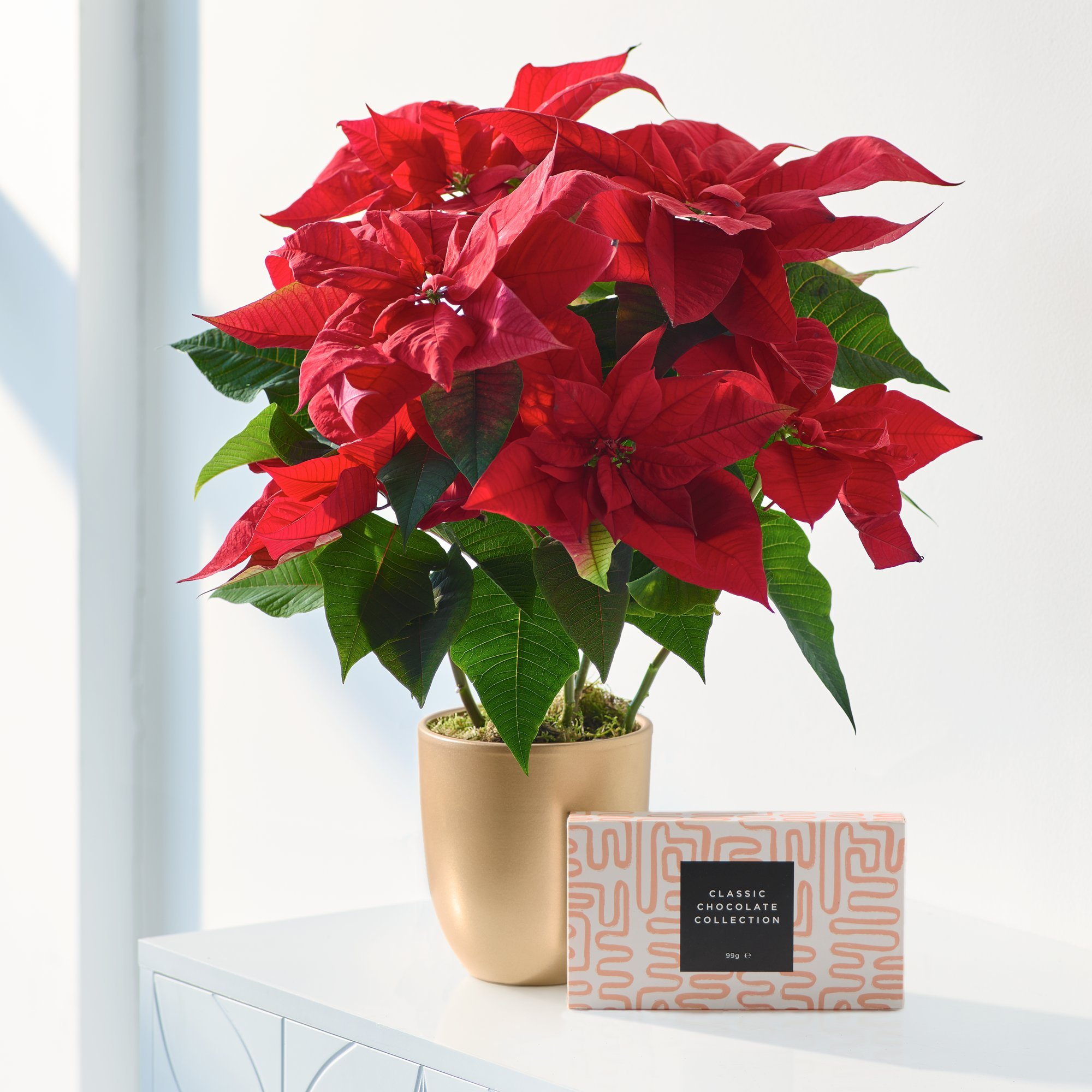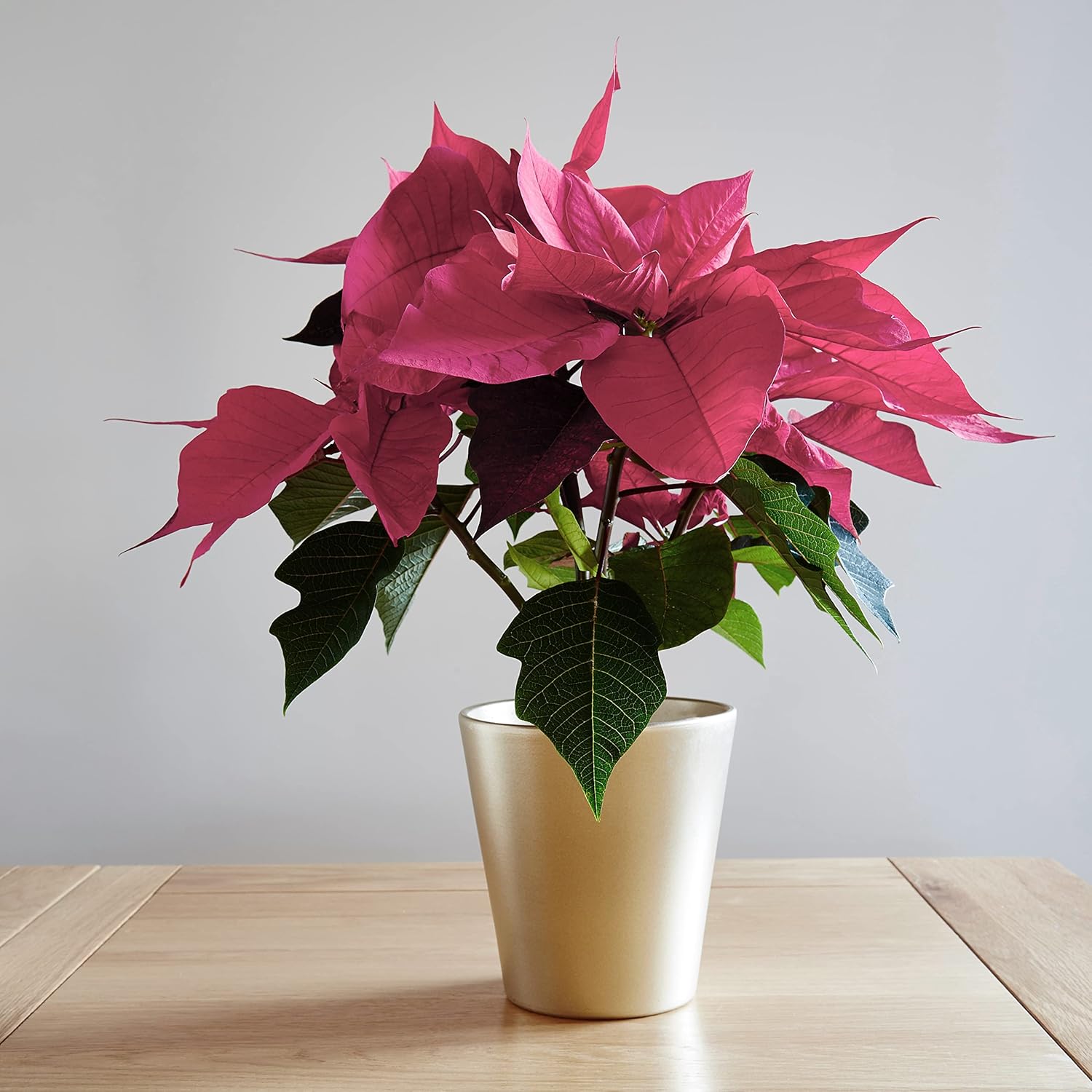5 tricks I use to choose a poinsettia from the supermarket as a gardens editor – the easiest ways to spot a healthy plant
Just in time for Christmas!
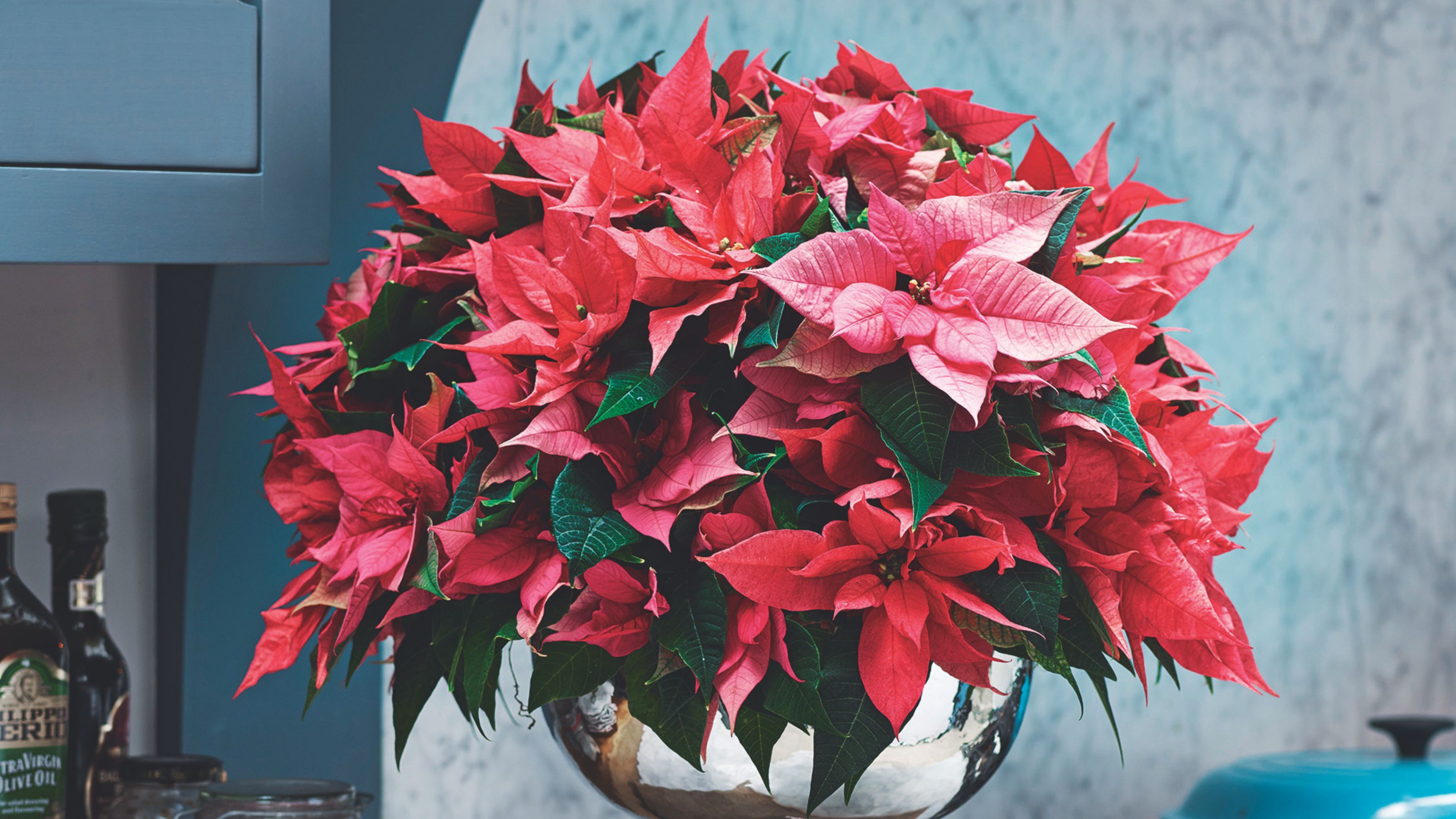

Glamorous symbols of Christmas, poinsettias are perhaps the most festive houseplant you can buy. Now is the perfect time to pick one up from your local shop – but it’s worth knowing how to choose a poinsettia before you head out to get one.
If you’re going to care for your poinsettia properly, it goes without saying that picking up a healthy plant will get you off to a good start. You’ll need to give the plants a good inspection before you take them to the checkout: leaves, flowers, and bracts (and I’ll explain what those are shortly). It’s worth checking the pot, too, and even the location of the plants in-store.
To find out how to choose a healthy poinsettia, I spoke to the experts, took their advice on board, and went on a hunt for one myself. Below, you’ll find a list of things to look out for when it comes to choosing a poinsettia from the supermarket or garden centre (with a few photos and learnings from my own search!).
1. Check the bracts
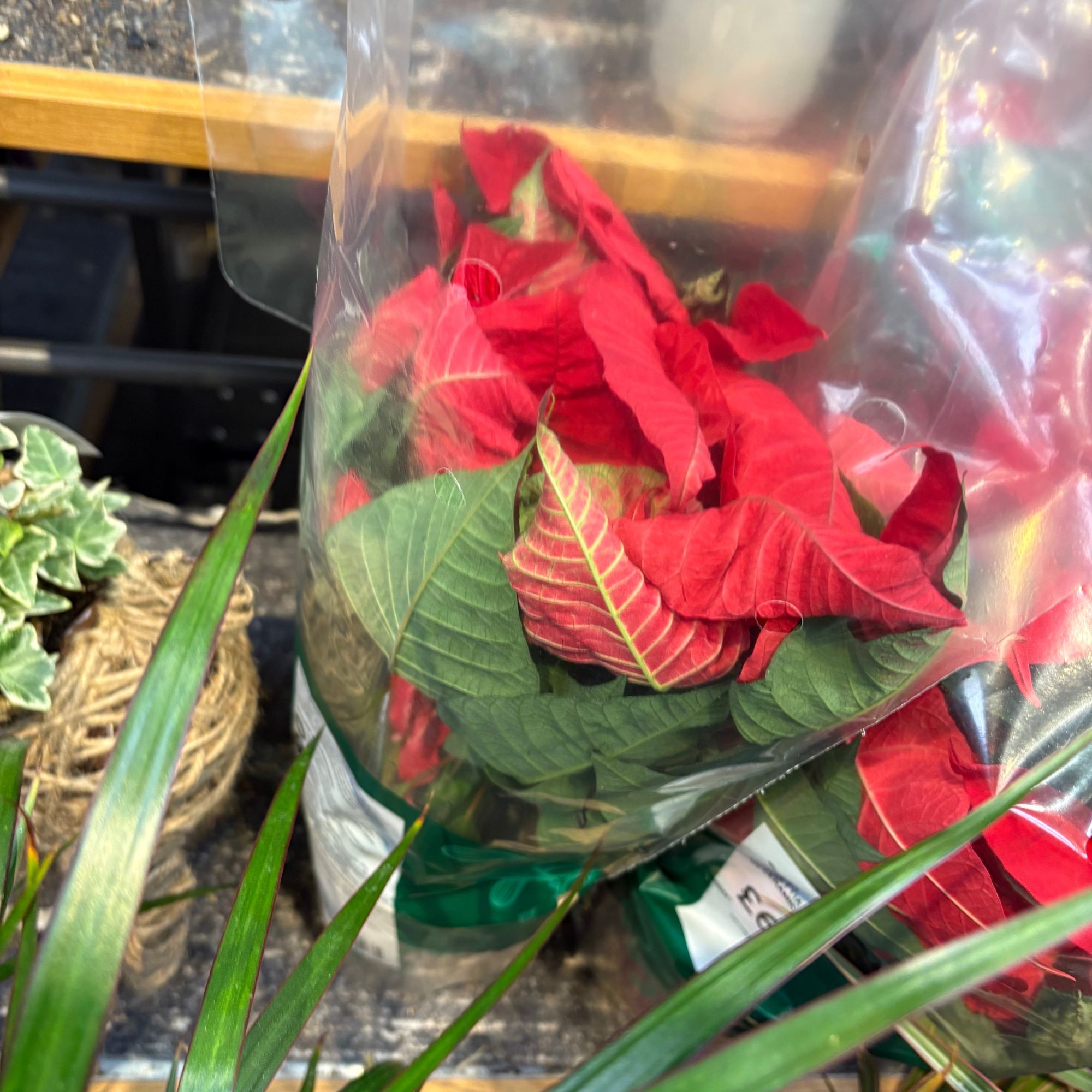
The bracts on this poor poinsettia were already curling – a prime example of what not to buy!
Contrary to popular belief, the red ‘flowers’ of a poinsettia aren’t flowers at all. They’re actually bracts, which are more leaves than petals, and it’s a good idea to start there when it comes to choosing a poinsettia from the supermarket or garden centre.
‘When I’m choosing poinsettias, I focus on the basics: the bracts should be bright and firm, not curled or drooping,’ says Jo Lambell, houseplant expert and founder of Beards & Daisies.
When I went out to look for a poinsettia, I found that a lot of the plants on sale had shrivelled, curling bracts. I’m all for rescuing a plant from the clearance table, but with Christmas so close, I decided it was better to set my sights on some of the more sprightly looking poinsettias on the shelf.
2. Look at the leaves
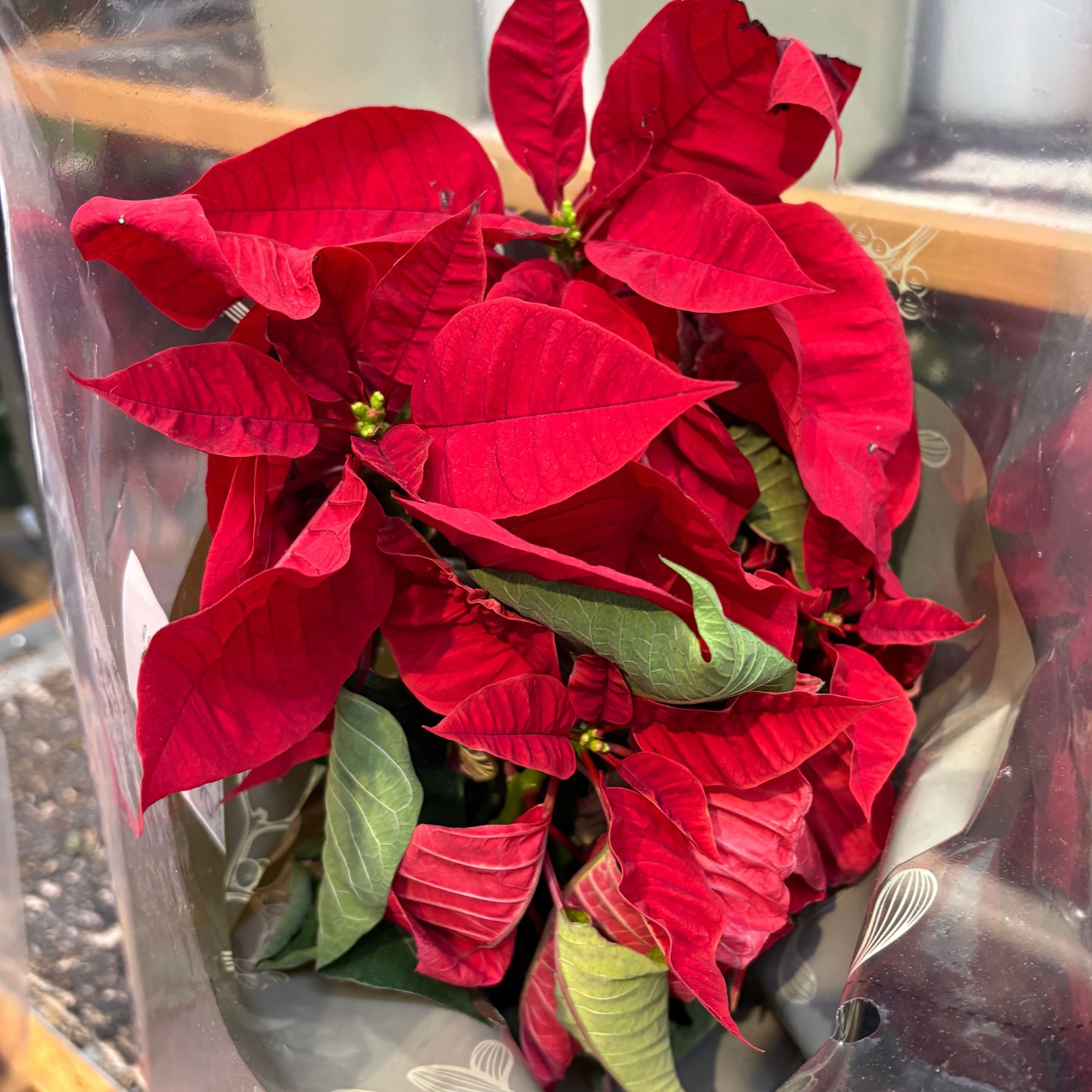
The leaves beneath the bracts on this poinsettia were already starting to yellow and die.
Beneath the red bracts of a poinsettia, you’ll find its green leaves. They’re another strong indicator of the plant’s health, so I had a rummage around beneath the bracts to see what I was up against.
Sign up to our newsletter for style inspiration, real homes, project and garden advice and shopping know-how
‘You can recognise a fresh, healthy poinsettia by its dense, undamaged foliage that has no discolouration or deformed leaves,’ says Dr Suzanne Lux, poinsettia expert at Stars for Europe. ‘If a plant is already losing leaves, look elsewhere.’
It’ll save you wondering why your poinsettia is dropping its leaves right off the bat, that’s for sure – and a strong set of leaves will help your poinsettia last longer, too.
You can also buy poinsettia-specific fertilisers that can help extend the life of your plant, like Growth Technology Poinsettia Focus, which is just £3.99 at Amazon.
3. Find the flowers
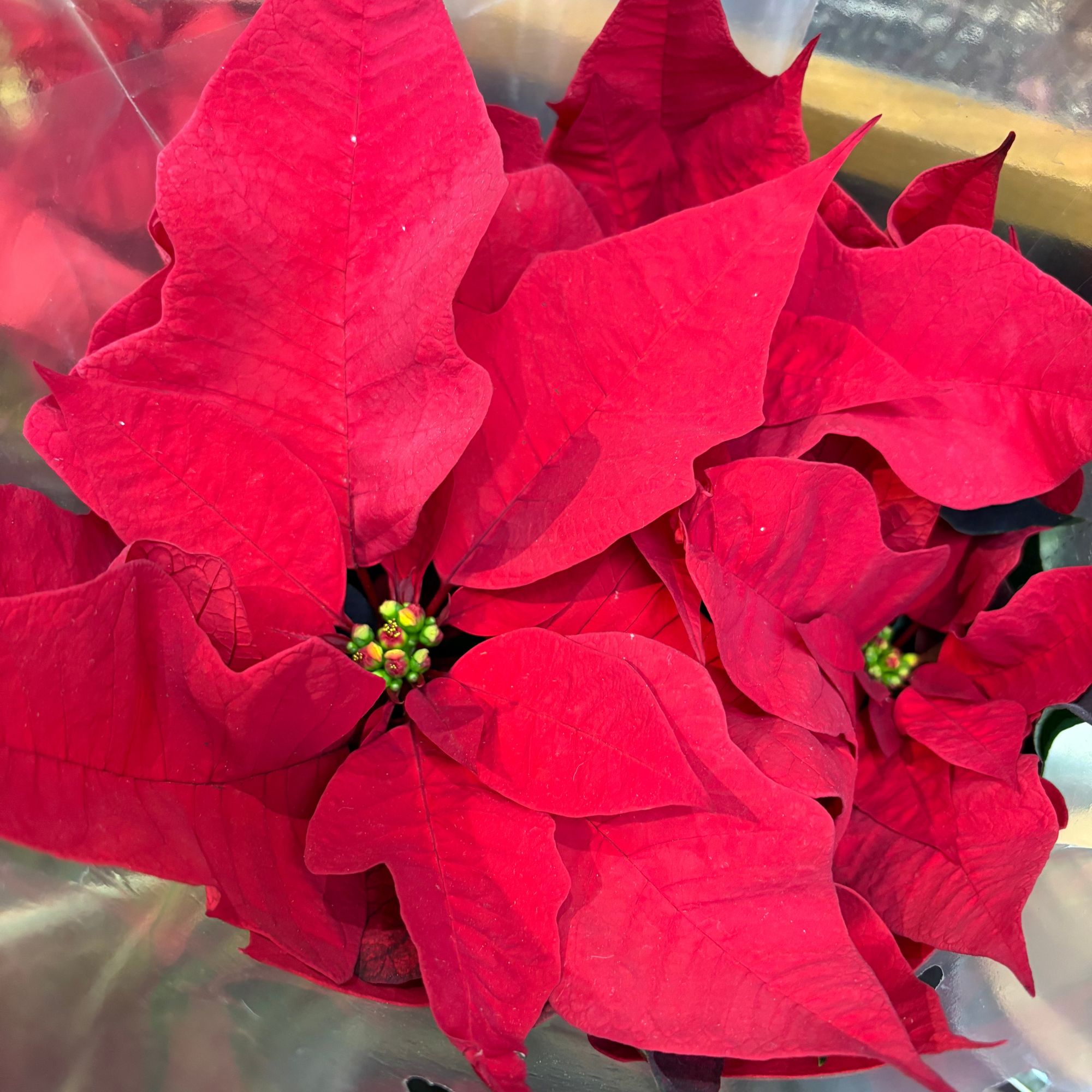
The tight, yellow-green flower buds on this poinsettia were a promising sign!
We’ve established that the red foliage of a poinsettia isn’t the flowering part, so where are the blooms?
Well, the flowers are actually located in the middle of the bracts, where they’re often mistaken for the plant’s pistils, or centre of the ‘flowers’. They’re tiny, yellow-green and often missed upon first glance.
‘Another important indicator of freshness is the flowers,’ says Dr Suzanne. ‘They are small and inconspicuous and are located in the middle of the coloured bracts. On a fresh poinsettia, they will be yellow-green and in bud.’
Poinsettias are one of the best Christmas houseplants you can buy for showstopping bracts and delicate blooms, so it’s worth choosing buds with the most potential.
4. Feel the pot's weight

The flower buds and bracts on this poinsettia signalled a healthy plant, and the soil was only slightly moist.
A lesser-known way of choosing a poinsettia is feeling the weight of the plant itself. It'll give you a good idea of how well it’s been looked after in the shop, and save you bothering about saving an overwatered plant.
‘It's easy to check whether a poinsettia is getting the right amount of water,’ says Dr Suzanne. ‘Simply lift the plant and its pot a little. If it's very light or noticeably heavy, be wary of buying it. The plant should also not be standing in water.’
If in doubt, Dr Suzanne says, choose a different poinsettia. It’s wiser to steer clear of plants with soggy soil, too – moist soil is okay, but anything wetter is a potential warning sign.
5. Note the location in the shop
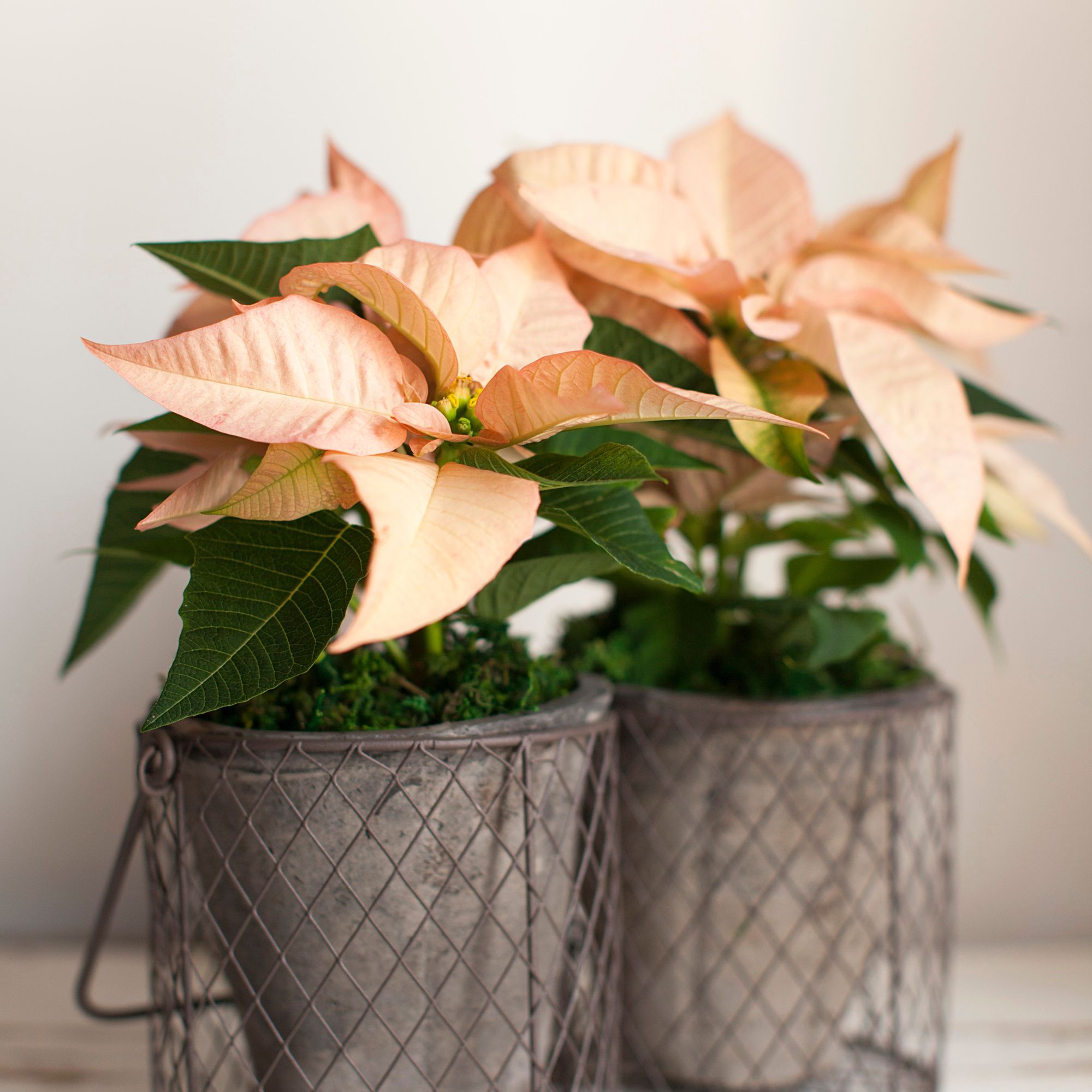
It's important to keep your poinsettia away from draughts and radiators when you bring it home, too.
We’ve covered the main signs of a healthy poinsettia on the plant itself, but its position in the shop can also offer insight into the plant’s current and future condition. For a start, they don’t like draughts.
‘Steer clear of poinsettias displayed in a draughty entrance area, outdoors in windy conditions, in temperatures below 15°C, or in a dark corner of the shop,’ warns Dr Suzanne. ‘They may have suffered damage that will only become visible a week later when the leaves drop.
‘In a shop, plants should be placed in a bright, warm spot protected from draughts.’
It’s also worth checking for any signs of pests and diseases.
‘Skip anything with soft stems, leaf spots, or signs of pests like sticky residue, white fluff, or tiny insects,’ adds Jo from Beards & Daisies.
Where to buy poinsettias online
If you’re looking to order a poinsettia online instead of heading out to the supermarket or garden centre for one, these are some of the best places to shop.
Check this list off as you browse for a poinsettia and you'll bring home a plant with plenty of potential!

Sophie joined the Ideal Home team as Gardens Editor in June 2024. After studying English at Royal Holloway, University of London, she began writing for Grow Your Own, which spurred on her love of gardening. She's tried growing almost every vegetable under the sun, and has a soft spot for roses and dinnerplate dahlias.
As Gardens Editor, Sophie's always on the lookout for the latest garden trend. She loves sharing growing hacks for every space, from herbaceous borders to balconies.
You must confirm your public display name before commenting
Please logout and then login again, you will then be prompted to enter your display name.

